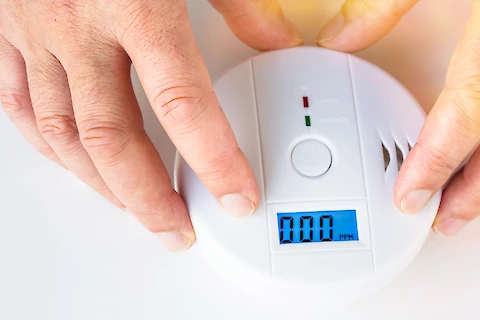
Are you a senior who has gas appliances in your home? You know how important it is for your health and safety to keep them in working order. But what if something goes wrong and they become a health hazard? That's why you should have well-maintained carbon monoxide detectors. This quick guide will help you ensure that these essential lifesavers are always ready and working. Here are tips for proper carbon monoxide detector maintenance.
What is Carbon Monoxide?
Carbon monoxide, or CO, is an invisible and odorless gas that's a byproduct of combustion. The primary sources of CO in the home include burning wood or gas fuel in stoves, furnaces, space heaters, as well as other appliances that aren't properly vented.
Why is it Important to Have Carbon Monoxide Detectors in Your Home?
Carbon monoxide detectors alert you when there's an unsafe level of CO in the air. Many times, people don't realize they are being exposed to CO until it's too late. Having a detector in your home ensures that you receive alerts early on so you can take the necessary steps to prevent any harm to yourself, your loved ones, or your pets.
What are the Symptoms of Carbon Monoxide Poisoning?
Some common symptoms of mild CO poisoning are lightheadedness, nausea, shortness of breath, headaches, as well as dizziness. If these symptoms aren't quickly addressed, they can lead to death.
Where to Install Carbon Monoxide Detectors
The National Fire Protection Association recommends placing at least one carbon monoxide detector in each bedroom, and one on each floor, including the basement. The ideal height for installing CO detectors is about five feet from the ground.
Additionally, don't install CO detectors within 10 feet of gas appliances, as they can trigger false alarms when they start up.
Proper Carbon Monoxide Detector Maintenance
To ensure that your carbon monoxide detectors remain operational, it's essential to properly maintain them. Here are tips for proper carbon monoxide detector maintenance:
- Test the Alarm: Testing the alarm on your detector every month is a good habit. Choose a day—like the first of the month, or the first Sunday of each month—that's easy to remember. Refer to your unit's instructions to find out how to test the model; it's usually easy and takes less than a moment.
- Check the Battery: Replace the batteries in a carbon monoxide detector at least every six months. Don't skimp on battery quality! If the detector runs on electricity, make sure the wires are in working order and not loose.
- Clean the Detector: Dirt and dust can also build up on your detector over time and interfere with its operation. Refer to the manufacturer's instructions on how to properly clean your detector.
- Replace the Detector: Carbon monoxide detectors also need replacing every five years to ensure they remain efficient.
Need Help with Household Tasks?
If you're a senior living in the New Hanover, Pender, Brunswick, or Wilmington areas, we can assist you with anything from long-term in-home care to light housework and maintenance. Find out what Senior Helpers Wilmington can do for you! Contact us today for more information.